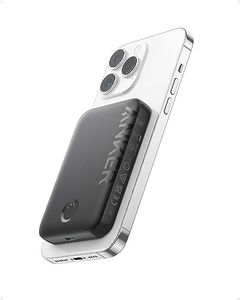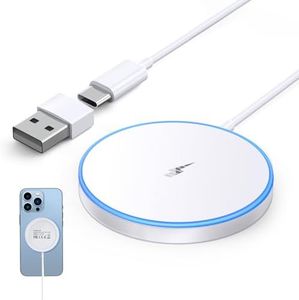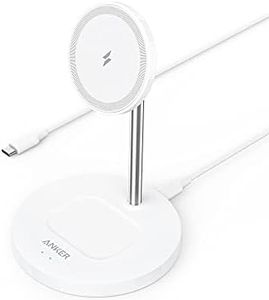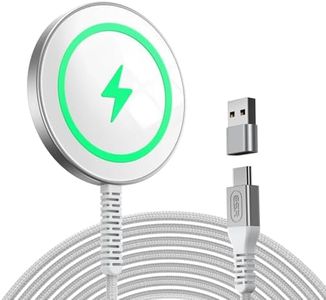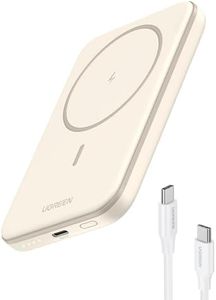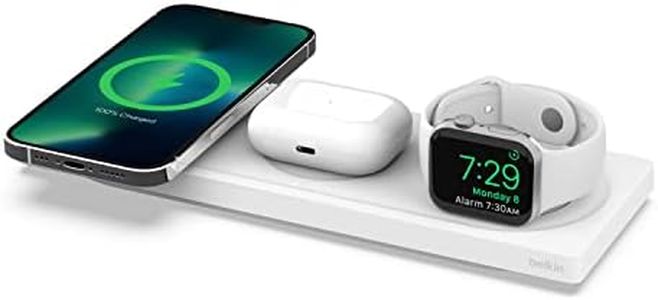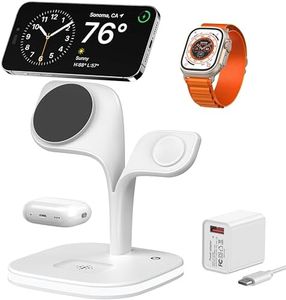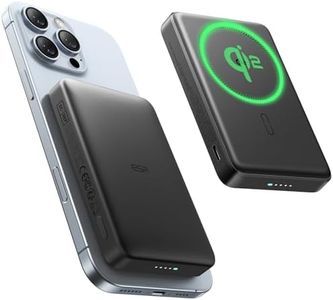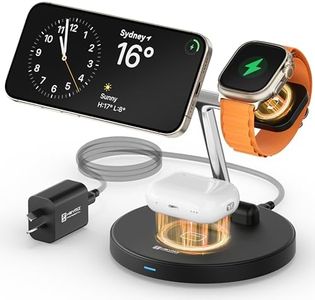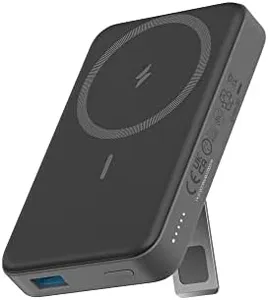We Use CookiesWe use cookies to enhance the security, performance,
functionality and for analytical and promotional activities. By continuing to browse this site you
are agreeing to our privacy policy
10 Best MagSafe Chargers
From leading brands and best sellers available on the web.Buying Guide for the Best MagSafe Chargers
When you’re choosing a MagSafe charger, it’s important to consider how it fits into your daily routine and what devices you plan to charge. MagSafe chargers use strong magnets to easily align and attach to your compatible Apple devices, mostly iPhones, providing efficient wireless charging. The key to finding the right one is understanding the important features that impact speed, convenience, safety, and usability.Charging Power (Wattage)Charging power, usually measured in watts (W), determines how quickly the MagSafe charger can recharge your device. Common power ratings are 5W, 7.5W, 10W, and 15W; higher values generally mean faster charging. Entry-level chargers may only offer lower wattage, which is fine for overnight charging or lower power needs, while higher wattage chargers are better if you need to recharge quickly. If your phone supports higher wattage (like 15W), choose a charger that matches it for the fastest performance; otherwise, lower wattage is sufficient if you charge for longer periods.
Magnetic Alignment StrengthThis refers to how strongly the charger snaps on and stays attached to your device. Stronger magnets ensure the charger stays in place even if you move your phone or use it while charging, while weaker magnets can make alignment tricky or lead to disconnections. If you often use your phone while charging or want to use it in different orientations (like in the car or on your desk), look for one with robust magnetic strength. If the charger will mostly sit undisturbed, this may be less critical.
Device CompatibilityNot all MagSafe chargers support every device. Some work best with specific iPhone generations (iPhone 12 and newer), and others may offer wireless charging for other devices like AirPods. Make sure your device is compatible by checking whether it supports MagSafe or Qi wireless charging. If you want to use the charger for multiple devices, consider one that’s certified for a wider range or offers dual/multi-device charging.
Build Quality and MaterialsThe build quality affects both durability and user experience. Premium materials (like aluminum and soft-touch surfaces) tend to last longer and feel better in hand, while cheaper plastics may be less durable or less comfortable. If you plan to travel with your MagSafe charger or use it often, go for one with higher build quality. Otherwise, if the charger will be mostly stationary, the material may be less of a concern.
Portability and Cable LengthPortability refers to the charger’s size and how easy it is to carry around. Smaller, slimmer designs are easier for travel or to slip in a bag, while larger ones may offer stands or extra features. Cable length determines how far from the power adapter you can use your phone while charging; longer cables are more flexible, especially for bedside or desk use, but can be bulkier. If you often move your charger or use it in places away from a power outlet, choose a compact model with a suitably long cable. For stationary use, size and cable length can be adjusted to your setup.
Heat Management and Safety FeaturesGood heat management is important because wireless chargers can get warm during use. Quality chargers have built-in safeguards to avoid overheating, which can protect your phone’s battery and the charger itself. Look for features like temperature control, foreign object detection, and certifications from safety agencies. These are especially important if you plan to charge devices overnight or unattended. Choose a charger with strong safety features for peace of mind and long-term use.
